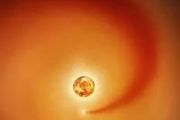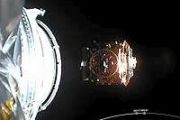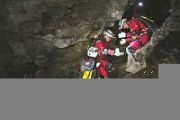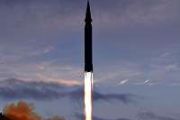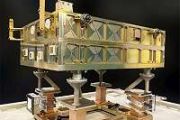
Copernical Team
Trackem Launches New GPS Business Tracking Platform
 Trackem GPS has officially launched its latest version of its client facing GPS tracking platform. The software launch has been 18 months in the making, for the 18-year-old business GPS fleet tracking company. The tall task of client migration has begun and is expected to be ongoing for a number of months ahead.
Trackem's new software platform was built to deliver on three main principles,
Trackem GPS has officially launched its latest version of its client facing GPS tracking platform. The software launch has been 18 months in the making, for the 18-year-old business GPS fleet tracking company. The tall task of client migration has begun and is expected to be ongoing for a number of months ahead.
Trackem's new software platform was built to deliver on three main principles, New Curtin-led research discovers the heart of our evolution
 Researchers have discovered a 380-million-year-old heart - the oldest ever found - alongside a separate fossilised stomach, intestine and liver in an ancient jawed fish, shedding new light on the evolution of our own bodies.
The new research, published in Science, found that the position of the organs in the body of arthrodires - an extinct class of armoured fishes that flourished through
Researchers have discovered a 380-million-year-old heart - the oldest ever found - alongside a separate fossilised stomach, intestine and liver in an ancient jawed fish, shedding new light on the evolution of our own bodies.
The new research, published in Science, found that the position of the organs in the body of arthrodires - an extinct class of armoured fishes that flourished through Raytheon and Northrop Grumman to deliver hypersonic air-breathing missile to USSF
 Raytheon Missiles and Defense, a Raytheon Technologies (NYSE: RTX) business, in partnership with Northrop Grumman Corporation (NYSE: NOC), has been selected to develop the Hypersonic Attack Cruise Missile (HACM) for the U.S. Air Force (USAF). HACM is a first-of-its-kind weapon developed in conjunction with the Southern Cross Integrated Flight Research Experiment (SCIFiRE), a U.S. and Australia p
Raytheon Missiles and Defense, a Raytheon Technologies (NYSE: RTX) business, in partnership with Northrop Grumman Corporation (NYSE: NOC), has been selected to develop the Hypersonic Attack Cruise Missile (HACM) for the U.S. Air Force (USAF). HACM is a first-of-its-kind weapon developed in conjunction with the Southern Cross Integrated Flight Research Experiment (SCIFiRE), a U.S. and Australia p HawkEye 360 awarded radio frequency contract by NRO
 HawkEye 360 Inc., the world's leading commercial provider of space-based radio frequency (RF) data and analytics, reports it has been awarded a contract from the NRO's Commercial Systems Program Office (CSPO). The contract will assess, mature, integrate, and operationalize commercial RF intelligence into the NRO's integrated overhead architecture to support warfighters, the intelligence communit
HawkEye 360 Inc., the world's leading commercial provider of space-based radio frequency (RF) data and analytics, reports it has been awarded a contract from the NRO's Commercial Systems Program Office (CSPO). The contract will assess, mature, integrate, and operationalize commercial RF intelligence into the NRO's integrated overhead architecture to support warfighters, the intelligence communit NRO awards commercial RF Capabilities Contract to Kleos Space
 Kleos Space Inc, a space-powered Radio Frequency Reconnaissance Data-as-a-Service (DaaS) and Mission-as-a-Service (MaaS) provider, has been awarded a first stage contract, from the National Reconnaissance Office (NRO) as part of the Strategic Commercial Enhancements Broad Agency Announcement (SCE BAA) Framework.
The NRO is responsible for maintaining global vigilance in times of peace and
Kleos Space Inc, a space-powered Radio Frequency Reconnaissance Data-as-a-Service (DaaS) and Mission-as-a-Service (MaaS) provider, has been awarded a first stage contract, from the National Reconnaissance Office (NRO) as part of the Strategic Commercial Enhancements Broad Agency Announcement (SCE BAA) Framework.
The NRO is responsible for maintaining global vigilance in times of peace and Juno probe takes detailed photo of Jupiter's moon, Europa
 NASA's Juno space probe captured detailed images during a close flyby of Europa, Jupiter's largest moon.
The probe came within 219 miles of the ice-covered celestial body, one of the closest approaches by any spacecraft.
The first image taken by the probe's Junocam was released Thursday. It shows the icy and rugged surface of an area close to Europa's equator, known as the Annwn
NASA's Juno space probe captured detailed images during a close flyby of Europa, Jupiter's largest moon.
The probe came within 219 miles of the ice-covered celestial body, one of the closest approaches by any spacecraft.
The first image taken by the probe's Junocam was released Thursday. It shows the icy and rugged surface of an area close to Europa's equator, known as the Annwn Firefly Aerospace scrubs launch after rocket engine shuts down
 Firefly Aerospace aborted an attempted launch Friday from Vandenberg Space Force Base in California after an unexpected engine shutdown.
An Alpha rocket was scheduled to blast off into space and perform tests in orbit, but shortly after ignition, an engine shut down, leaving the rocket on the launch pad without any ostensible damage.
"The vehicle went into auto-abort after igniti
Firefly Aerospace aborted an attempted launch Friday from Vandenberg Space Force Base in California after an unexpected engine shutdown.
An Alpha rocket was scheduled to blast off into space and perform tests in orbit, but shortly after ignition, an engine shut down, leaving the rocket on the launch pad without any ostensible damage.
"The vehicle went into auto-abort after igniti Unknown debris dislodges from Ingenuity Mars helicopter's foot during 33rd flight
 NASA said Friday that it is looking into debris that was seen on the foot of the Ingenuity helicopter's foot during its 33rd space flight on Mars.
"We're looking into a bit of debris that ended up on Ingenuity's foot during its latest aerial commute," NASA's Jet Propulsion Lab said in a statement on Twitter.
NASA shared a GIF video of the tiny helicopter's flight Friday which sho
NASA said Friday that it is looking into debris that was seen on the foot of the Ingenuity helicopter's foot during its 33rd space flight on Mars.
"We're looking into a bit of debris that ended up on Ingenuity's foot during its latest aerial commute," NASA's Jet Propulsion Lab said in a statement on Twitter.
NASA shared a GIF video of the tiny helicopter's flight Friday which sho Elon Musk may help NASA extend life for Hubble
 The U.S. space agency, NASA, said it signed an agreement with Elon Musk's SpaceX to study whether the life expectancy of the venerated Hubble Space Telescope can be extended.
NASA said Thursday it has no plans to carry out or fund a service mission for the Hubble Space Telescope. Instead, it will carry out a feasibility study to see if SpaceX can use its Crew Dragon capsules to do the h
The U.S. space agency, NASA, said it signed an agreement with Elon Musk's SpaceX to study whether the life expectancy of the venerated Hubble Space Telescope can be extended.
NASA said Thursday it has no plans to carry out or fund a service mission for the Hubble Space Telescope. Instead, it will carry out a feasibility study to see if SpaceX can use its Crew Dragon capsules to do the h Solar power beams: a step towards cleaner energy
 Beaming solar power could help Europe access more renewable energies, in an independent way. Airbus has now demonstrated how this new technological concept could work in its X-Works Innovation Factory.
Everything is illuminated, thumbs up. Jean-Dominique Coste, Yoann Thueux and their colleagues have just shown decision-makers from politics and industry the inner workings of a new energy co
Beaming solar power could help Europe access more renewable energies, in an independent way. Airbus has now demonstrated how this new technological concept could work in its X-Works Innovation Factory.
Everything is illuminated, thumbs up. Jean-Dominique Coste, Yoann Thueux and their colleagues have just shown decision-makers from politics and industry the inner workings of a new energy co 













